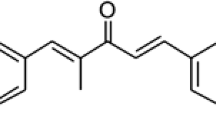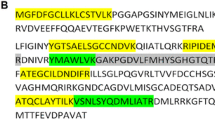Abstract
Three naphthoimidazoles presenting aromatic groups attached to the imidazole ring were the most active against trypomastigotes of Trypanosoma cruzi between 45 derivatives from β-lapachone. N1 is active against the three forms of the parasite. In this work, we investigated N2 and N3 and analyzed the effect of the three derivatives on metacyclogenesis, endocytosis, and cell cycle. In epimastigotes, N2 and N3 blocked the cell cycle, inhibited succinate cytochrome c reductase, metacyclogenesis, and induced damage to mitochondrion, Golgi, and reservosomes. In treated trypomastigotes, there were alterations in the mitochondrion, nucleus and kinetoplast, and DNA fragmentation. Preincubation with cysteine protease inhibitors reversed the effect of N1, N2, and N3. Such reversion and ultrastructural alterations suggest the involvement of autophagy in parasite death. Ultrastructural, flow cytometry, and biochemical studies suggest that naphthoimidazoles interferes with the energetic metabolism and induces DNA fragmentation.








Similar content being viewed by others
References
Bendayan M, Nanci A, Kan FWK (1987) Effect of tissue processing on colloidal gold cytochemistry. J Histochem Cytochem 35:983–996
Boveris A, Docampo R, Turrens JF, Stoppani AOM (1978) Effect of β-lapachone on superoxide anion and hydrogen peroxide production in Trypanosoma cruzi. Biochem J 175:431–439
Camargo EC (1964) Growth and differentiation in Trypanosoma cruzi. Origin of metacyclic trypanosomes in liquid media. Rev Inst Med Trop São Paulo 6:93–100
Campetella O, Martinez J, Cazzulo JJ (1990) A major cysteine proteinase is developmentally regulated in Trypanosoma cruzi. FEMS Microbiol Lett 55:145–149
Codogno P, Meijer AJ (2006) Atg5: more than an autophagy factor. Nat Cell Biol 8:1045–1047
Contreras VT, Salles JM, Thomas N, Morel CM, Goldenberg S (1985) In vitro differentiation of Trypanosoma cruzi under chemically defined conditions. Mol Biochem Parasitol 16:315–327
Contreras VT, Araújo-Jorge TC, Bonaldo MC, Thomaz N, Barbosa HS, Meirelles MNL, Goldenberg S (1988) Biological aspects of the Dm28c clone of Trypanosoma cruzi after metacyclogenesis in chemically defined media. Mem Inst Oswaldo Cruz 83:123–133
Coura JR, De Castro SL (2002) A critical review on Chagas disease chemotherapy. Mem Inst Oswaldo Cruz 97:3–24
De Castro SL, Meirelles MNL, Oliveira MM (1987) Trypanosoma cruzi: adrenergic modulation of cAMP role in proliferation and differentiation of amastigotes in vitro. Exp Parasitol 64:368–375
Demarchi F, Bertoli C, Copetti T, Tanida I, Brancolini C, Eskelinen EL, Schneider C (2006) Calpain is required for macroautophagy in mammalian cells. J Cell Biol 175:595–605
Docampo R, Moreno SNJ (2001) The acidocalcisome. Mol Biochem Parasitol 114:151–159
Docampo R, De Souza W, Miranda K, Rohloff P, Moreno SN (2005) Acidocalcisomes-conserved from bacteria to man. Nature Rev 3:251–261
Figueiredo RCBQ, Rosa DS, Soares MJ (2000) Differentiation of Trypanosoma cruzi epimastigotes: metacyclogenesis and adhesion to substrate are triggered by nutritional stress. J Parasitol 86:1213–1318
Figueiredo RCBQ, Rosa DS, Gomes YM, Nakasawa M, Soares MJ (2004) Reservosome: an endocytic compartment in epimastigote forms of the protozoan Trypanosoma cruzi (Kinetoplastida: Trypanosomatidae). Correlation between endocytosis of nutrients and cell differentiation. Parasitology 129:431–438
Li YZ, Sun XG, LaMont JT, Pardee AB, Li CJ (2003) Selective killing of cancer cells by β-lapachone: direct checkpoint activation as a strategy against cancer. Proc Natl Acad Sci USA 100:2674–2678
Lopes JN, Cruz FS, Docampo R, Vasconcellos ME, Sampaio MC, Pinto AV, Gilbert B (1978) In vitro and in vivo evaluation of the toxicity of 1,4-naphthoquinone and 1,2-naphthoquinone derivatives against Trypanosoma cruzi. Ann Trop Med Parasitol 72:523–531
Masters BS, Williams Jr CH, Kamin H (1967) The preparation and properties of microsomal TPNH-cytochrome c reductase from pig liver. In: Estrabrook RW, Pullman ME (eds) Methods in enzymology, vol 10. Academic, New York, pp 565–573
Menna-Barreto RFS, Henriques-Pons A, Pinto AV, Morgado-Diaz JA, Soares MJ, De Castro SL (2005) Effect of a β-lapachone-derived naphthoimidazole on Trypanosoma cruzi: identification of target organelles. J Antimicrob Chemother 56:1034–1041
Molina Portela MP, Fernandez Villamil SH, Perissinotti LJ, Stoppani AOM (1996) Redox cycling of o-naphthoquinones in trypanosomatids. Superoxide and hydrogen peroxide production. Biochem Pharmacol 52:1875–1882
Moura KCG, Emery FS, Neves-Pinto C, Pinto MCFR, Dantas AP, Salomão K, De Castro SL, Pinto AV (2001) Synthesis and trypanocidal activity of naphthoquinones isolated from Tabebuia and heterocyclic derivatives: a review from an interdisciplinary study. J Braz Chem Soc 12:325–338
Moura KCG, Salomão K, Menna-Barreto RFS, Emery FS, Pinto MCFR, Pinto AV, De Castro SL (2004) Studies on the trypanocidal activity of semi-synthetic pyran[b-4,3]naphtho[1,2-d]imidazoles from β-lapachone. Eur J Med Chem 39:639–645
Munday R (2000) Autoxidation of naphtohydroquinones: effects of pH, naphthoquinones and superoxide dismutase. Free Radic Res 32:245–253
Neves-Pinto C, Dantas AP, De Moura KC, Emery FS, Polequevitch PF, Pinto MCFR, De Castro SL, Pinto AV (2000) Chemical reactivity studies with naphthoquinones from Tabebuia with anti-trypanosomal efficacy. Arzneim-Forsch 50:1120–1128
Paris C, Loiseau PM, Bories C, Breard J (2004) Miltefosine induces apoptosis-like death in Leishmania donovani promastigotes. Antimicrob Agents Chemother 48:852–859
Pinto AV, Neves-Pinto C, Pinto MCFR, Emery FS, Moura KCG, Carvalho CEM, Brinn IM (1997a) Fluorescent symmetric phenazines from naphthoquinones. Heterocycles 45:2431–2436
Pinto AV, Neves-Pinto C, Pinto MCFR, Santa-Rita RM, Pezzella C, De Castro SL (1997b) Trypanocidal activity of synthetic heterocyclic derivatives of active quinones from Tabebuia sp. Arzneim-Forsch 47:74–79
Porto-Carreiro I, Attias M, Miranda K, De Souza W, Cunha-e-Silva N (2000) Trypanosoma cruzi epimastigote endocytic pathway: cargo enters the cytostome and passes through an early endosomal network before storage in reservosomes. Eur J Cell Biol 79:858–869
Sambrook J, Fritsch EF, Maniatis T (1989) Gel electrophoresis DNA and pulsed-field agarose. In: Sambrook J, Fritsch EF, Maniatis T (eds) Molecular cloning: a laboratory manual, vol 1. Cold Spring Harbor Laboratory, New York, pp 441–542
Santa-Rita RM, Barbosa HS, Meirelles MNL, De Castro SL (2000) Effect of the alkyl-lysophospholipids on the proliferation and differentiation of Trypanosoma cruzi. Acta Trop 75:219–228
Silva LHP, Nussenszweig V (1953) Sobre uma cepa de Trypanosoma cruzi altamente virulenta para o camundongo branco. Folia Clin Biol 20:191–208
Soares MJ (1999) The reservosome of Trypanosoma cruzi epimastigotes: an organelle of the endocytic pathway with a role on metacyclogenesis. Mem Inst Oswaldo Cruz 94(Suppl 1):139–141
Soares MJ, De Souza W (1991) Endocytosis of gold-labelled proteins and LDL by Trypanosoma cruzi. Parasitol Res 77:461–468
Soares MJ, Souto-Padron T, De Souza W (1992) Identification of a large pre-lysosomal compartment in the pathogenic protozoon Trypanosoma cruzi. J Cell Sci 102:157–167
Vinhaes MC, Schofield CJ (2003) Trypanosomiasis control: surmounting diminishing returns. Trends Parasitol 19:112–113
Acknowledgment
This work was supported by grants from DECIT/SCTIE/MS, CNPq, FAPERJ, and Papes IV/FIOCRUZ. We are very grateful to Dr. José A. Morgado-Diaz (INCA/RJ) for his support on mitochondrial enzymatic activity assays.
Author information
Authors and Affiliations
Corresponding author
Rights and permissions
About this article
Cite this article
Menna-Barreto, R.F.S., Corrêa, J.R., Pinto, A.V. et al. Mitochondrial disruption and DNA fragmentation in Trypanosoma cruzi induced by naphthoimidazoles synthesized from β-lapachone. Parasitol Res 101, 895–905 (2007). https://doi.org/10.1007/s00436-007-0556-1
Received:
Accepted:
Published:
Issue Date:
DOI: https://doi.org/10.1007/s00436-007-0556-1




